“This post was sponsored by SwimWays as part of an Influencer Activation for Influence Central and all opinions expressed in my post are my own. Please read my disclosure policy for more information.”
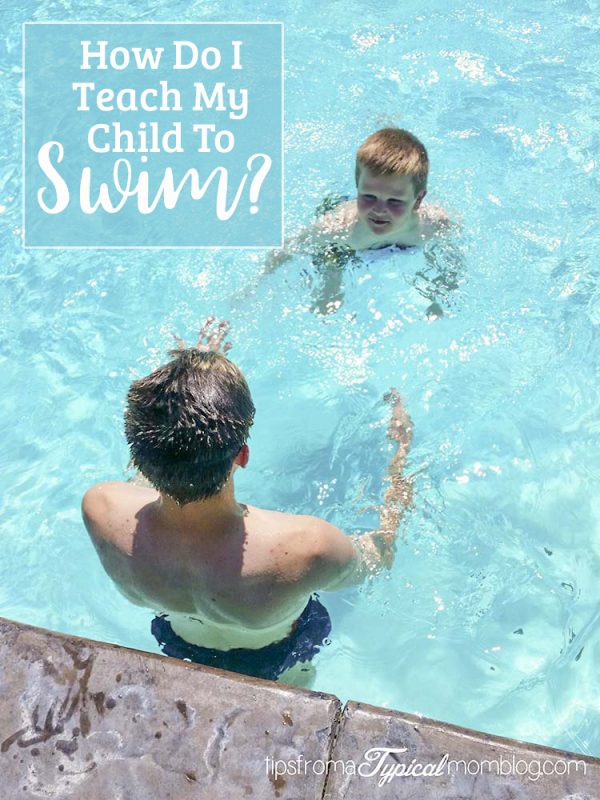
Summer is such a fun time to spend time with the kids. Camping, going on hikes, spending time at the beach and the swimming pool, eating popsicles, and the list goes on and on. But if you’re like me, you’re children’s safety is your top priority. And when you are around water, your mom radar comes on to track the kids at all times. National Learn to Swim Day was on May 20th this year so I thought today I’d share my tips on how to teach your own child to swim along with some swim safety advice.
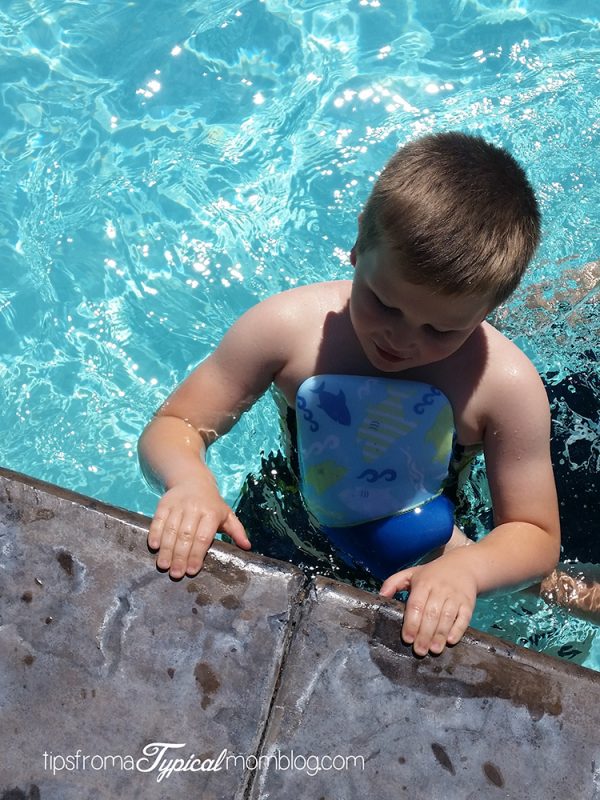
How to teach your child to swim. Kids are learning to swim earlier and earlier these days. You can even teach a baby to swim. If you know that your child can swim you are a little less worried about them at the pool, at the beach and while camping. There are so many great resources available to help teach your child to swim. There are many different reasons parents are wanting to teach their own children to swim. Paying for swimming lessons can be expensive, your child could learn at a different rate, whether they are advanced or behind. Your child could have anxiety about the water. For whatever reason you chose to teach your own child to swim, I’m going to help you today. I am not a swim instructor, but my husband is, and I’m going to share his advice with you also.
First, let’s talk about flotation devices.
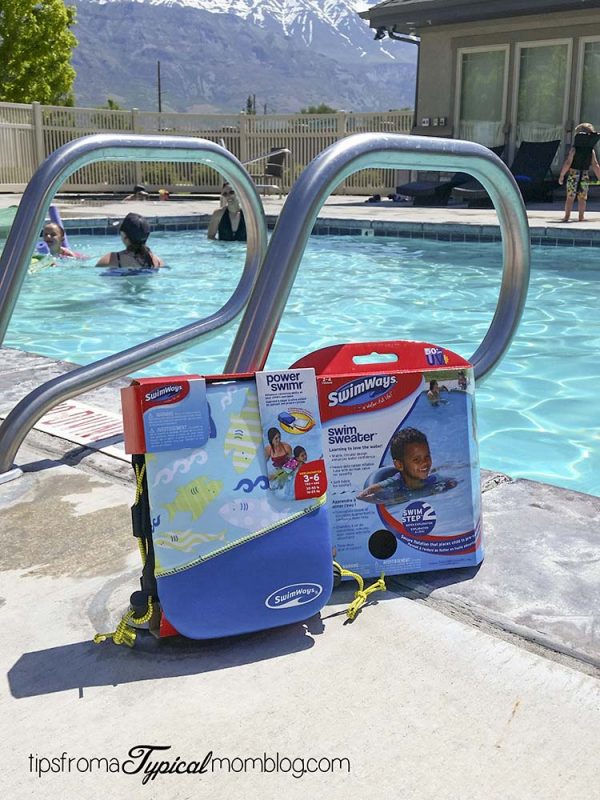
My kids are all pretty good swimmers, all except for my 6 year old. He has taken a few lessons and still has a hard time in the deep end. So I’m always sure that he has a flotation device on at all times while we are at the pool. I never take it off of him unless I’m right there with him in the water. I’ve tried all sorts of flotation devices and my all time favorite are SwimWays. SwimWays helps your child learn to swim with confidence. They help you teach your child to swim with three steps. SwimWays are available at Toys “R” Us stores.
- Step one is with the Baby Spring Float Activity Center to help your baby get used to being in the water and learn that it’s fun. One of the hardest things to overcome with children is a fear of the water and when they panic, they don’t do well in the water. Making sure your child is comfortable in the water is the first step to developing a love of learning to swim.
- Step two is the Swim Sweater. This flotation device helps the child learn to lean forward and use their arms and legs to propel them through the water. It doesn’t inhibit movement so the child can learn how to kick and splash while having a fun time. The sun sleeves add extra UV protection to your child’s sensitive skin. This float helps kids learn to swim with two positions, upward and forward stroke.
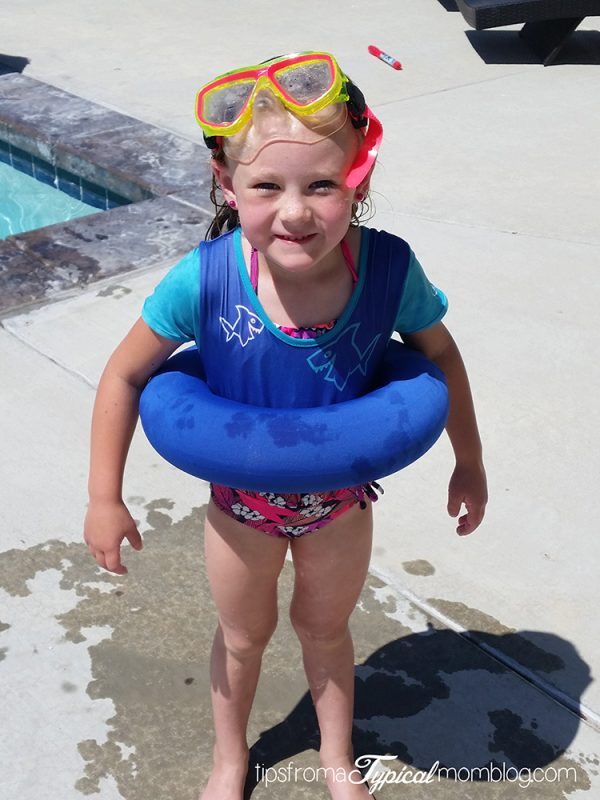
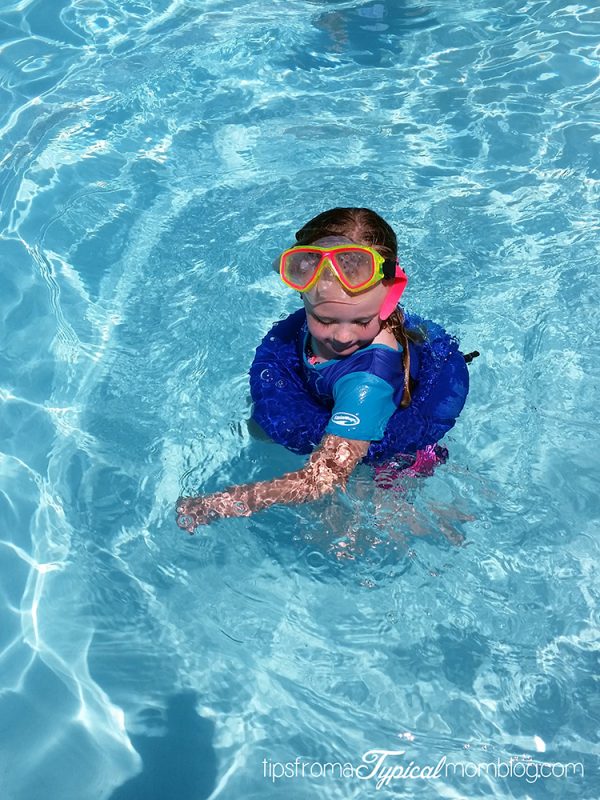
- Step Three is the Power Swimr. This step gives parents a swim training system. This is the phase we are at right now with my 6 year old. With this genius vest you can teach your kids to swim and feel confident in the water. These vests are so helpful because as your child grows more confident in the water, you can remove a few inner flotation pads a little at a time until your child doesn’t need them any more. There are 9 removable floats in this vest. They can learn to swim at their own pace. It’s like training wheels for the water! My son loves his Power Swimr. He feels like he is doing it all on his own. He loves the freedom he feels. There are no restrictions on his arms and legs at all so he can freely move them the way his swimming lessons has taught him. I could adjust the cords and support strap to make sure it had a snug fit.
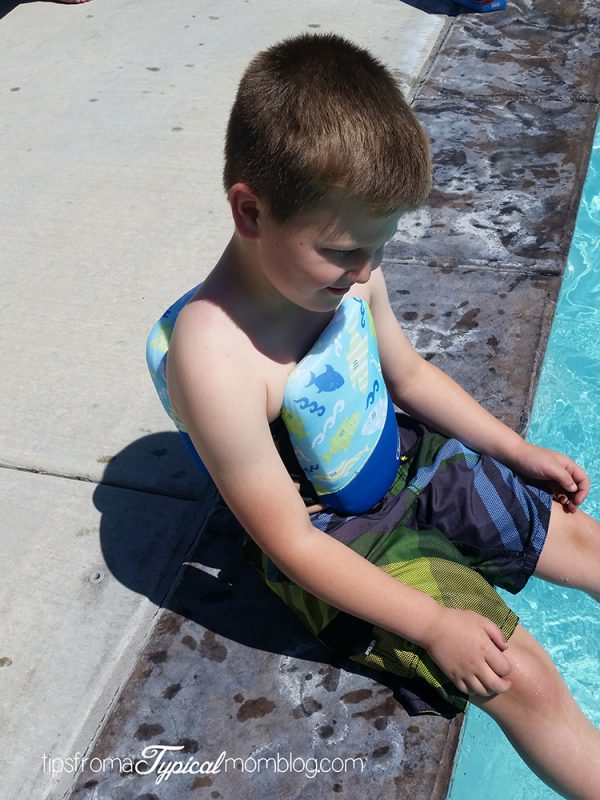
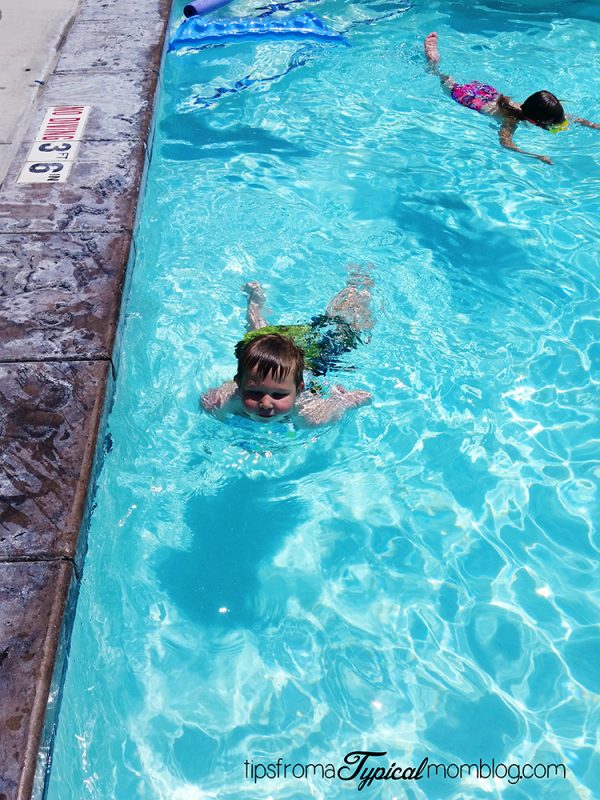
With SwimWays, you can feel empowered to teach your little ones to feel confident in the water and to teach them how to swim. When your child can swim, you will feel so much better when you take a trip to the pool.
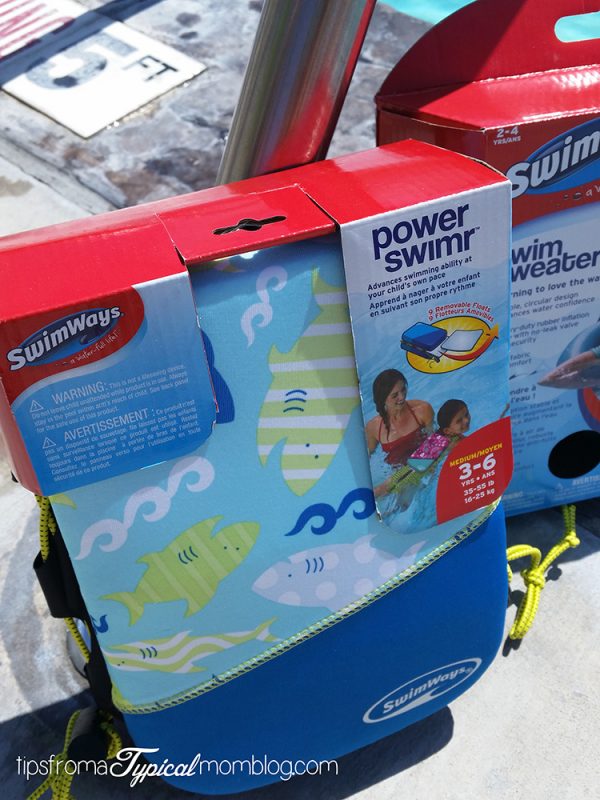
Now let’s move on to actual lessons.
Step One: Baby/Toddler Stage
During this stage you are just trying to get your baby used to the water. You want the water to be something they are not afraid of. If they are afraid, it’s really hard to teach them when they get older. Show your baby how to splash, sing songs as you bob around the pool with them, let them sit in the Baby Spring Float and play with toys. SAFETY: When your baby is in a flotation device, be sure they are always at arms length. Don’t submerge your baby, swallowing too much water can be very dangerous for your baby. Be sure you keep them covered up from the sun.
Step Two: Ages 2-4
Your child will be more mobile and active at this age. This is where the Swim Sweater comes into play. It’s important that they can use their legs and arms and move from an upright position to a forward position. Play games with your toddler. Throw a ball just out of reach to them so they are forced to kick and push the water to move themselves. Teach them how to lean forward and kick and push the water with their arms. Take off the flotation device and help them float on their back and stomach. Teach them how to jump in the pool and immediately roll to their backs and float. Teach them to blow bubbles in the water so they are not swallowing it. SAFETY: Your child may feel a little too comfortable around the water now so you really need to keep a sharp eye on them and keep a flotation device on them at all times. Don’t leave toys in the pool so they are not tempted to jump in after them.
Step Three: Ages 5-6
This age gets a little tricky. If you feel like your child will not listen to you, and do what you say, then this is the time you might want to enroll them in swimming lessons with an instructor. Some children do better with a teacher than they do with their own parents. Safety should always be your top priority. If your child is still good learning with you continue teaching them life saving skills. Start with floating. Be sure they know how to jump in the water and float. Then start adding bobbing in and out of the water learning how to hold their breath. It’s important for kids to learn how to push off the bottom of the pool and come up for breath. Play fun water games with them to get them confident splashing around in the pool and jumping in. I have a list of 9 of our favorite pool games here. These all teach kids a swimming skill. SAFETY: please see step two safety suggestions.
Step Four: 7 years and up
Your older child should be able to go under water and hold their breath for longer periods of time. Once they are comfortable doing that, start throwing toys to the bottom of the shallow end of the pool for them to retrieve. Start teaching them proper swimming strokes like the breast stroke and back stroke. Since they are older, they are stronger too so they will be able to swim longer distances. Jumping off the diving board is a big step for them so encourage them to try after practicing a few times off the side of the pool. SAFETY: Be sure to be at the pool with your children. Don’t be distracted by a phone or a talking with a friend. If you go boating be sure that everyone has a life jacket on. If you feel like you can’t be as attentive as you would like, please keep a life jacket on your child when around water. Better safe than sorry.
I hope you have fun teaching your child learn how to swim. This can be such a great memory building activity to do with your children. We love going to the pool with the family. If you want to learn more about the SwimWays products watch this fun video. Be sure to check out SwimWays on social media too!
Facebook: https://www.facebook.com/swimways
Twitter: https://twitter.com/SwimWays
Instagram: https://www.instagram.com/SwimWays


Leave a Reply